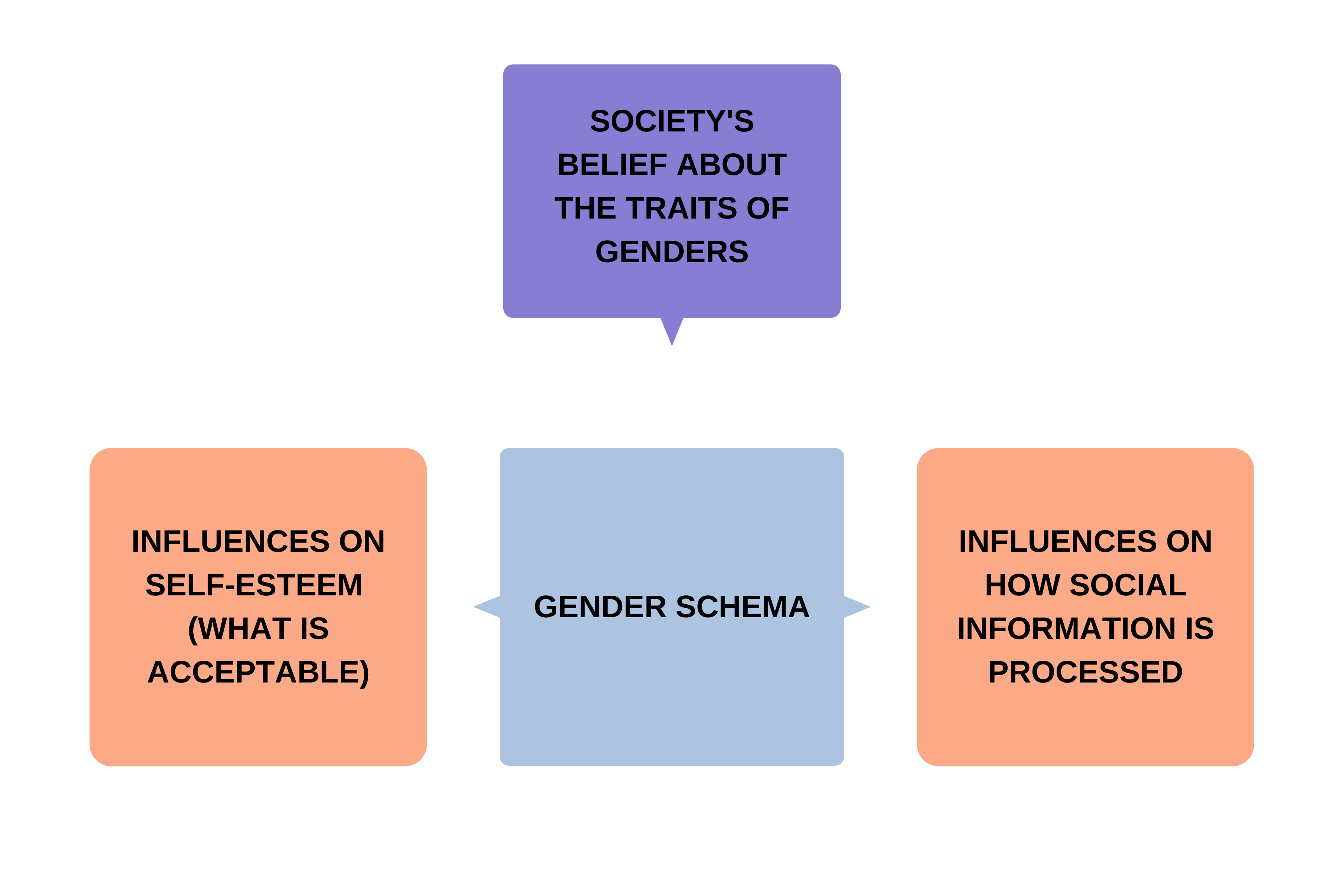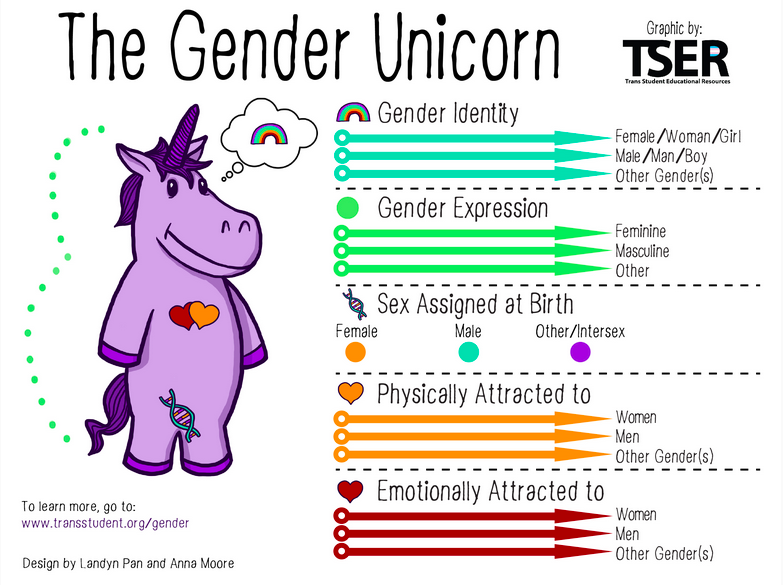 10
min
10
min

Gender is one of the many components that can make up someone's identity.
It is important to note that gender diversity exists beyond Canadian and American
contexts. Many cultures recognize that there are more than 2
genders.
There are many different gender identities that we will define later in this unit. These gender
identities include male, female, transgender, non-binary, gender-neutral, agender, pangender,
genderqueer, Two-Sprit, third-gender, and all, none, or a combination of these. Gender diversity
has been around for a very long time!
Interact with the map below to explore different regions' history with gender identity and
diversity.
(A Map of Gender-Diverse Cultures, 2015)
Expand the drop downs below learn some gender identity terms. The terms people use to describe their gender identity are always evolving. The most important thing is to be respectful and use the terms that people prefer.
People can have different experiences and face different barriers in life depending on their gender identity. For example, transgender people can face challenges to develop a sense of belonging. We shared some statistics below that illustrate just a snapshot of the challenges that some transgender people go through.
(Outlook study, 2018)
People who are not cisgender can face what is called minority stress.
Minority stress = homo/bi/transphobia + Stigma (expectations of rejection and discrimination) + actual experience of discrimination & violence.
The higher the minority stress level, the higher the risk for mental health problems.
The increased challenges that non-cisgender people can face, including minority stress,
are just a few of the reasons why cisgender people
need to learn about gender identities.
One key step in learning about gender identity is understanding
what makes up someone's gender identity. Over the next few sections,
we will define the concepts listed below to unpack what gender identity is.
By: Sandra Bem

Gender schema helps us understand gender stereotypes. Gender stereotypes influence the roles that people feel they need to follow to be considered one gender or another. As people develop gender schemas, stereotypes can impact what a person believes to be acceptable or unacceptable for persons of their gender identity. Stereotypes are harmful; by being aware of some common stereotypes, we might be better equipped to recognize others.
Expand the drop downs below to see examples of each stereotype.

Let’s take a look at the Gender Unicorn and break down gender identity and gender expression.
It is important to note that gender identity is not always equal to gender expression and vice versa!

“Gender identity is each person’s internal and individual experience of gender. It is a person’s sense of being a woman, a man, both, neither, or anywhere along the gender spectrum. A person’s gender identity may be the same as or different from their birth-assigned gender.”
(Ontario Human Rights Commission’s “Policy on Preventing Discrimination Because of Gender Identity and Gender Expression.”)

“Gender expression is how a person publicly expresses or presents their gender. This can include behavior and outward appearances such as dress, hair, make-up, body language and voice. A person’s chosen name and pronoun are also common ways of expressing gender. Others perceive a person’s gender through these attributes.”
(Ontario Human Rights Commission’s “Policy on Preventing Discrimination Because of Gender Identity and Gender Expression.”)
Gender Identity:
Gender Expression:
It’s important to know that someone’s gender identity may not align with their gender expression.
Instead of assuming someone’s gender, it is always better to allow people to choose to share their gender or not. Someone's name and pronouns are two ways in which people express their gender identity.
Using inclusive language is important to accommodate and respect everyone. The words we use to refer to gender identity and expression are constantly evolving. You can visit sources like OK2BME to learn what words are commonly preferred and why. It is important to use inclusive, correct language because it helps you:
The language we use in reference to someone's gender identity and expression is important.
Gender diversity exists beyond Canadian and American contexts and has existed for a very long time.
2SLGBTQ+ folks face greater challenges than cisgender people.